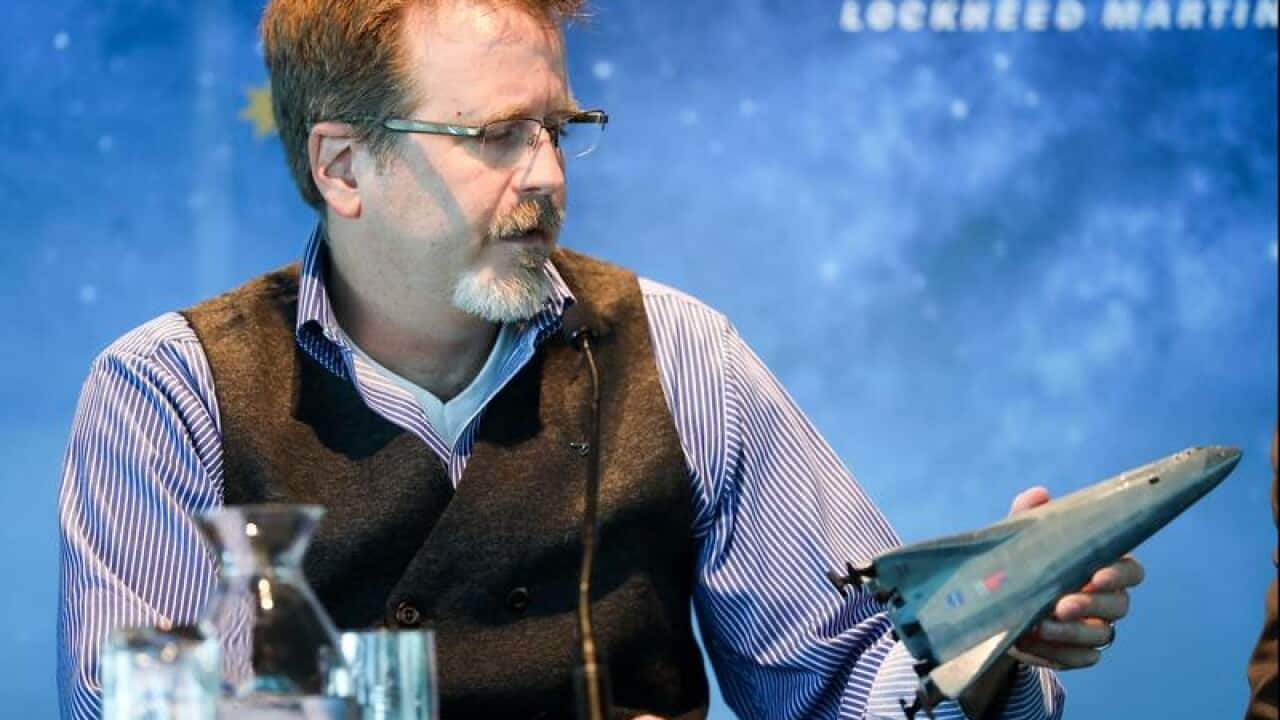At the Afghan National Army Officer Academy, on the outskirts of Kabul, yellow smoke drifts lazily across the mock up village.
Gunfire rings out, the sound of blank cartridges, as the toli - or company - of Afghan officer cadets storm compounds under the direction of their officers.
Watching on are British, Danish, New Zealander and Australian staff. This is the mission for the Australian Defence Force to train, advise and assist at the Afghan National Army Officer Academy.
Australian soldiers, like Captain Gabrielle Taylor are not training the cadets; they are mentoring the officers who train the cadets. "It's my role to ensure the instructors are practising the most up-to-date instructional techniques, and just to hone their skills as much as we can while we're here," she said.
"It's my role to ensure the instructors are practising the most up-to-date instructional techniques, and just to hone their skills as much as we can while we're here," she said.

Afghan National Army officers watch the exercise Source: Myles Morgan
"It's absolutely not a box ticking exercise. We know there's a real threat out there and they're going to face it as soon as they graduate as officers from ANAOA."
The threats are numerous in one of the world's most dangerous nations.
The Afghan government controls about 60 per cent of the the country. The Taliban controls about 10 per cent, mostly in the south, and the remainder is contested by radical groups like Al Qaeda, the Haqqani Network and a relatively young Islamic State Korasan Province.
The nation needs ANAOA to work so the country has a capable military. The officer cadets are trained on the Sandhurst model in small infantry tactics, leadership, disciple, physical fitness and military culture. The British refer to it as Sandhurst in the Sand, the Australian equivalent is Duntroon in the Dunes.
The British refer to it as Sandhurst in the Sand, the Australian equivalent is Duntroon in the Dunes.

Officer cadets training to fight in a village. Source: Myles Morgan
Captain Jawad, an Afghan National Army officer at ANAOA, told SBS World News he was confident the school would turn its cadets into effective leaders for an often maligned ANA.
"Yeah, absolutely because the plan of education we are having in this academy is a high equality program and I'm sure the cadets will graduate as good officers from this academy," he said.
His role is to discipline cadets in his toli and teach them about leadership.
"A leader is having lots of good qualities like having a good plan, being honest, to have good morals," he said.
Afghan women training alongside men
ANAOA is trying to be as progressive as the western military mentoring. Female officer cadets have only recently been integrated into classrooms and field exercises alongside their male colleagues.
This year, the academy hopes to see its 100th female soldier graduate.
Officer Cadet Noori, from Kabul, joined the academy a few months ago.
“I came to this academy to learn something here for the sake of this country, to serve for this country and the sake of ladies as well. They should have a good life in Afghanistan,” she told SBS World News. As she is being interviewed, some male officers watch on curiously, making the occasional remark.
As she is being interviewed, some male officers watch on curiously, making the occasional remark.

Afghan women have only recently been allowed to train alongside men Source: Myles Morgan
“We don't have any challenges in this academy,” she said.
“All the officers, they're here with us like brothers, they are respecting to the ladies.”
Many of the female officer cadets hide their identities, especially around strangers, to avoid death threats and being targeted by the country’s insurgents.
Captain Taylor said there was a period of adjustment for the Afghans as they recognised she was a female officer.
“It's something they're not used to, but I’m sure with us having an increased presence here at ANAOA it will become more familiar to them,” she said.
There's also the familiar sight of armed Australian soldiers at ANAOA. No Australian mentor enters the academy without at least one armed guardian angel - ready to react at any moment to threats like an insider attack or the base coming under fire.
It's one of the most combat-like roles in the Australian military today.
For cadets like Officer Cadet Noori, she hopes her graduation will be an inspiration for a country trying to rebuild itself after forty years of war.
“I am proud and I'm feeling honourable,” she said.
“It's a big proud [sic] for my family as well to be an officer in the future.”
Definitely on the path to success: British Chief Mentor
The Chief Mentor at ANAOA is British Brigadier David Colthup. He's responsible for the Academy's 63 mentors, a mixture of British, Australian, Danish and New Zealander soldiers.
He praised the “pragmatic” approach of the Australian soldier.
“The mentors themselves bring a different perspective from our army's way of approaching things. Not wrong, just different,” he told SBS World News.
“That's a rich mix of experience that contributes to the mission as a whole.”
On his third deployment to Afghanistan, he said many other nations would struggle to create a similarly successful academy as the Afghans have done in five years.
“So far in its existence, it's commissioned over 2,500 cadets and at the end of November this year, we’ll pass the 3,000 mark,” he said.
“The training works fine but we just need to make sure that, institutionally, the organisation is resilient enough to survive the knocks and bumps it will experience like any military academy does.”
He said while the British partnership with ANAOA will be enduring, it will not always be so well manned.
“For us, the measure of success is that at some point in the future we are able to reduce the amount of officer training we do.”






